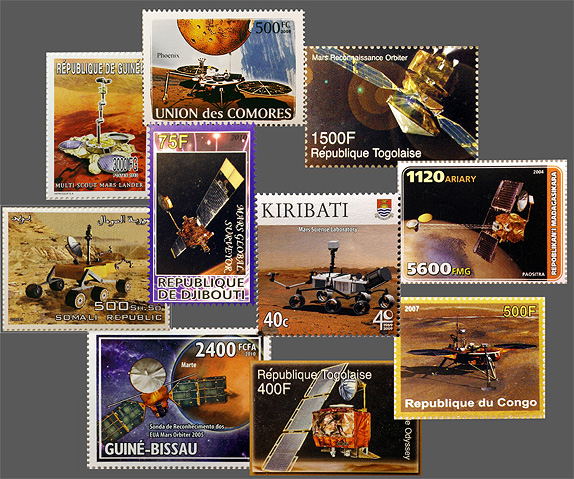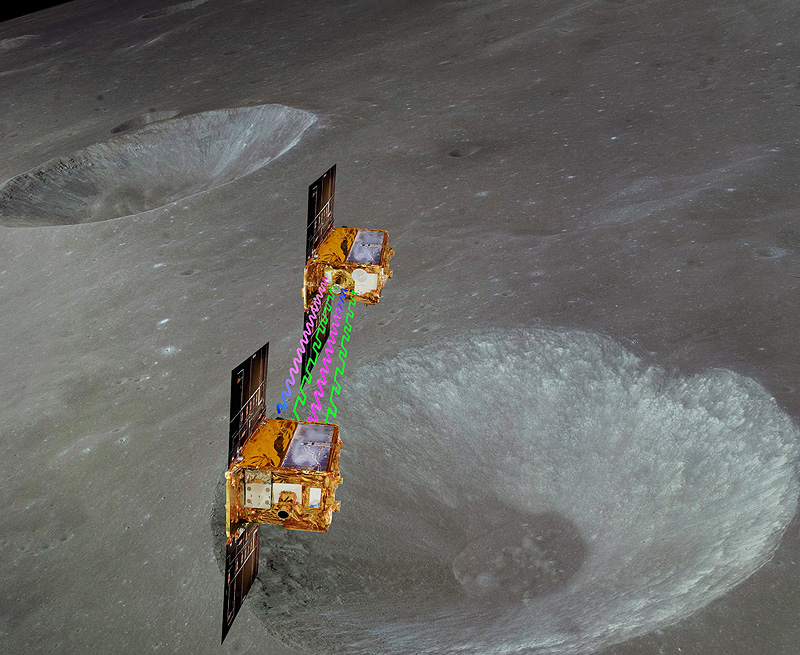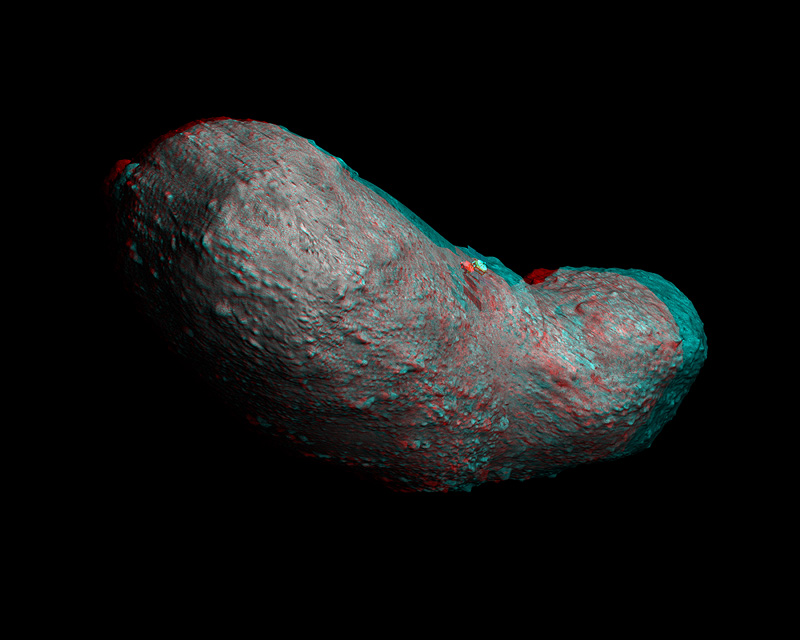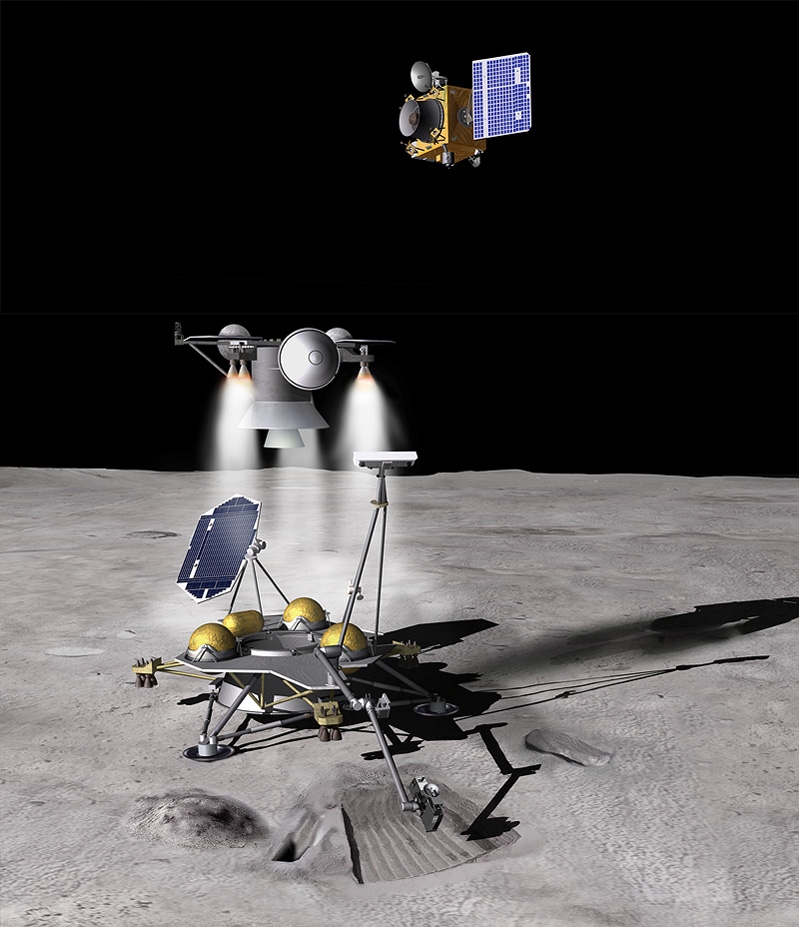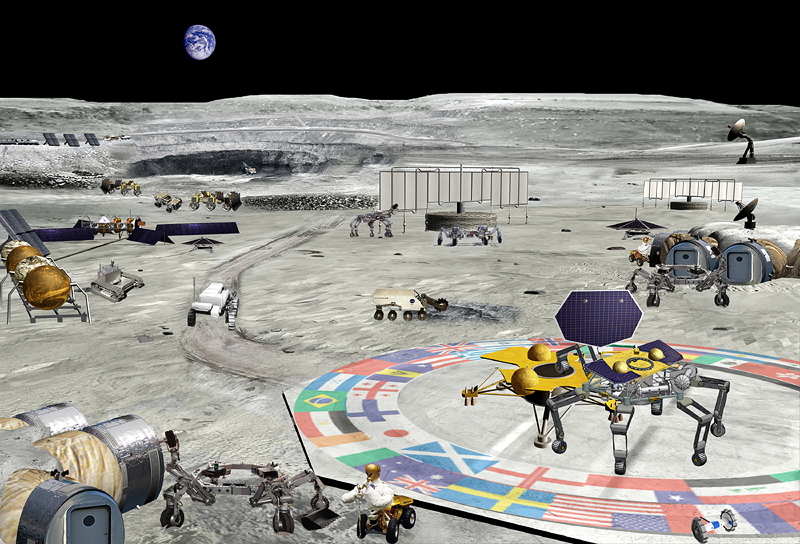|
Corby Waste is a computer graphic artist at the NASA Jet
Propulsion Laboratory in Pasadena, California. He is senior mission
artist for the Mars Exploration Program, although that's not
an official title. His images of Mars mission spacecraft have
appeared worldwide on the internet, in print, on TV and on numerous
products including 98 foreign postage stamps. Since 1998 Corby
has created many well-known images for the Mars Global Surveyor,
Mars Odyssey, Mars Reconnaissance Orbiter, Phoenix Mars Lander
and Mars Science Laboratory projects, among others. (see Mars
Art Headlines Poster)
Corby's father and grandfather worked for San Francisco's
Bechtel Corporation and for the first ten years of his life his
family traveled
extensively. They eventually settled permanently in Marin
County, California in his father's home town of Ross. Corby earned
a Bachelor of Arts degree from The Evergreen State College in
Olympia, Washington. He learned computer graphics in the late
1980's at the Computer Arts Institute and the Center for Electronic
Arts in the San Francisco Bay Area. His first major success as
a computer artist was his creation of several highly regarded
virtual reality simulations. Following the successful Mars Pathfinder
mission in 1997 he was offered a chance to work for the Mars
Program at JPL as their first computer artist. His previous
space experiences served him well at the Lab.
Over the last 21 years Corby's artwork has enjoyed widespread
use by NASA and has even been launched
into space twice.
A highlight of his career is that although he is neither
a scientist or an engineer he was allowed closeup access to both
the Mars
Reconnaissance Orbiter and Phoenix
Mars Lander inside tightly restricted clean rooms.
In addition to his work for Mars, Corby has created visualizations
for Solar System missions and studies including GRAIL, the Lunette
lunar lander network study, the MoonRise New Frontiers proposal,
Dawn, JUNO and the Titan Saturn System Mission Flagship Study.
He was a Board Member at Large of the Fluorescent Mineral Society,
has been a member of the Planetary Society since 1985 and his
science fiction illustration involvement with the Cordwainer
Smith Foundation beginning in 2001 led to his becoming responsible
for persuading the Planetary Society to include a CD on board
the Cosmos-1 Solar Sail which contained the Cordwainer Smith
story "The Lady Who Sailed the Soul". On June 21, 2005,
a Russian submarine attempted to launch Cosmos-1, carrying the
CD, from the Barents Sea using a converted
missile. The launch failed, unfortunately, and the Cosmo-1
and CD were lost.
May, 2012: I was interviewed for podcast by telephone with
Australian government science reporter Vanessa Hill about my
JPL mission artist job. Listen to "A
Planetary Canvas" here.
August 26, 2013: LA Talk Radio show host Ilona Europa interviewed
Corby about his JPL mission artist career and also about his
friend Scottish music artist Scosha.
It was Scosha's first US interview and radio airplay. The audio
can be listened to here.
2014: Have created additional gallery
webpage for new material including my stories from Twitter.
2015: Twitter
announced list of the Top 10 Tweets in History. My Phoenix
Mars Lander art appeared as the icon on one of them.
Awards:
1999 - JPL Team Award, which mentioned my 3D Mars images.
2002 - NASA Group Achievement Award to Mars Theme Education
and Public Outreach Team
2006 -NASA Group Achievement Award to Mars Reconnaissance
Orbiter Project Development Team
2007 - Phoenix Mars Mission Certificate of Recognition
for lasting contribution to the visualization of the Phoenix
Mission
2009 -NASA Group Achievement Award for Phoenix Project
Science Development
2012 - NASA Group Achievement Award for outstanding and
exceptional contributions by the GRAIL mission formulation team
in winning the Discovery-12 NASA competition.
2013 - NASA Group Achievement Award for MSL Mission System
Development Team
See: My
Life on Mars: Working for the Mars Program
See: Mars
and Solar System Exploration Artwork Gallery
He designed, created and illustrated the entire Fourth
Millennium website (with only a few minor exceptions). |


